About 10 days ago my first scientific article of the year has been released. For those interested, it is freely available from the arxiv. It is about precision calculations (a topic I have already discussed within my blogs), and it concerns the production of supersymmetric particles at CERN’s Large Hadron Collider. Initially, this was the topic I wanted to discuss in the present blog, with an introduction to supersymmetry as first section. However, this section quickly turned out as being as long as what a post could be. This gave rise to the present blog, and a discussion about my last research article is thus postponed to next week.
In this post, I introduce the concept of supersymmetry, and I browse the motivations explaining why it is a very appealing framework for high-energy phenomena beyond the Standard Model of particle physics. Supersymmetry is indeed covered by hundreds of experimental searches, as well as by hundreds of phenomenological studies. Or actually by thousands of them!
So, what is supersymmetry? As can be guessed from the word ‘supersymmetry’ itself, it is a symmetry. However, it is a special one (or even a super one). Supersymmetry has been initially proposed in the 1960s from very generic quantum field theory considerations. It then turned out that its effects could cure many problems and limitations of the Standard Model of particle physics. This makes it an excellent and well-motivated framework to study new phenomena beyond the Standard Model of particle physics.
Let’s now dive deep into details and provide more explanations.
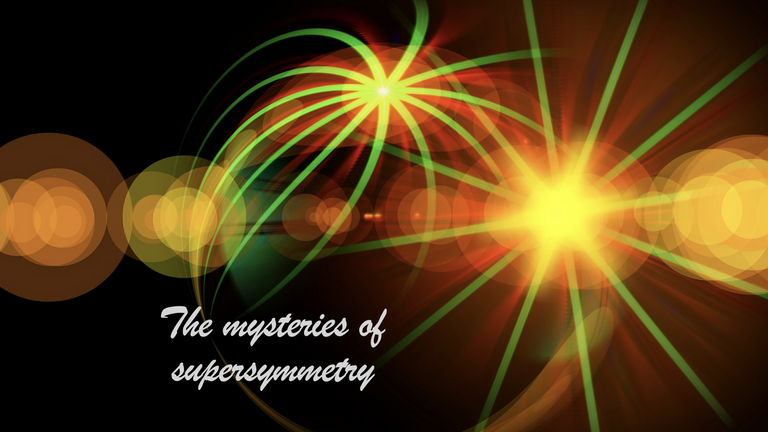
[Credits: Original image from geralt (Pixabay)]
Overture - bosons and fermions
There are two big classes of particles in our universe, that are coined fermionic and bosonic particles. Elementary particles have numbers of properties like their mass or their electric charge. In addition, they also possess what is called a spin quantum number, that indicates the amount of intrinsic angular momentum that they carry.
This purely quantum property comes either as a half-integer multiple of a fundamental quantity, or as an integer multiple of it. In the former case, we have a particle that is called a fermion, and in the latter case it is called a boson. Examples of fermions include all matter particles of the Standard Model (quarks and leptons), whereas examples of bosons include the carriers of the fundamental forces (photons, gluons, weak bosons) and the Higgs boson. For more information on this zoo of fundamental particles, I refer to older blog that I wrote last December.
Bosons and fermions are very different in their quantum nature. Whereas fermions cannot co-exist in the same quantum state, such a restriction does not apply to bosons. This is what we call Pauli exclusion principle. This principle tells us that we can pile up as many bosons as we want in the lowest energy state of a system, whereas fermions have to be organised in levels of higher and higher energies as two fermions cannot lie in the same energy level.
This is a known fact that has important consequences. These include in particular the entire structure of Mendeleev’s periodic table and why different atoms have different properties. In other words, this is at the origins of the structure and the properties of all matter in our universe!
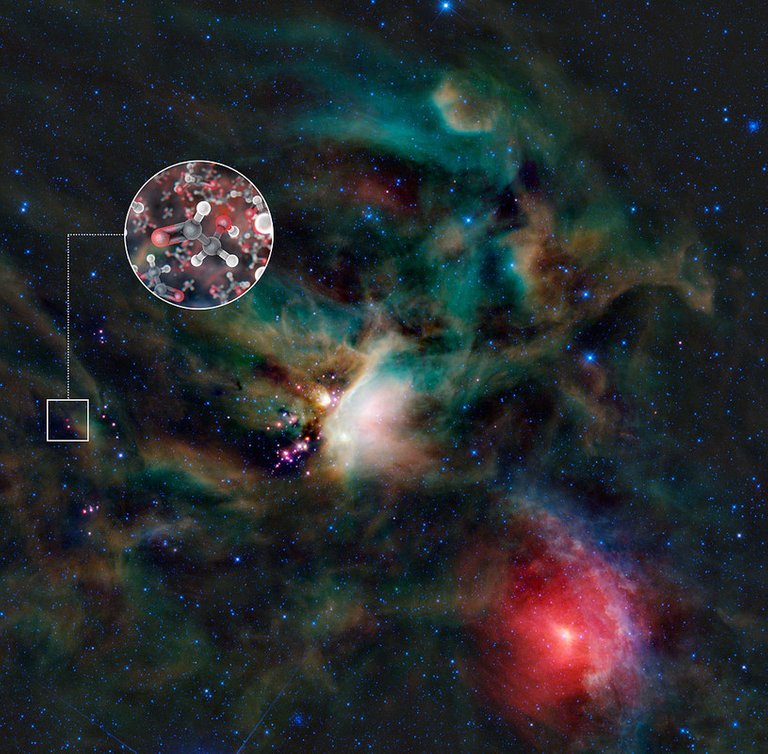
[Credits: ALMA and NASA (CC BY 4.0)]
Act 1 - a link between bosons and fermions
Supersymmetry is a symmetry that links bosons and fermions. In other words, it creates a connection between classes of particles that are fundamentally different. Equivalently, every fermion of the theory is associated with a bosonic partner, and every boson of the theory is associated with a fermionic partner. Whereas this may sound wizardry to relate particles that have incompatible properties (for instance the above-mentioned Pauli exclusion principle), quantum field theory tells us that supersymmetry is the most general symmetry property with which we can build a theory.
Let’s take a generic theory with interacting bosons and fermions. We say that this theory possesses a symmetry if the laws of physics are unchanged through the corresponding symmetry operation. For instance, if I take an apple and let it fall to the ground, it falls in the same way regardless of where I am on the planet and at which direction I look. We thus have an invariance of the laws of physics with respect to translations and (some) rotations.
So, let’s go back to our particle physics theory, and let’s try to equip it with the most general symmetry possible. This symmetry has obviously to be compatible with the core principles of quantum field theory. When doing so, we automatically get a theory in which there is a relation between bosons and fermions. I know this may sound a bit abstract at this stage, but there is a proof which I won’t detail here for simplicity.
The conclusion is however quite a strong one. If we try to built the most general (and thus most elegant) theory of nature, it has to be supersymmetric. We can therefore take the Standard Model of particle physics, and supersymmetrise it to make it more elegant. As a consequence, every single particle of the Standard Model gets associated with a partner of a different nature.
- The quarks and leptons of the Standard Model are fermions, and their partners are bosonic squarks and sleptons.
- Photons, gluons, weak bosons and the Higgs boson are all bosons in the Standard Model. Their partners are fermions called gauginos and higgsinos.
In practice, this implies that we double the particle content of the Standard Model in order to make it more elegant from a symmetry point of view.
Whereas this is great from a conceptual side, this has also a very strong weakness. A prediction of supersymmetry is that all partners should have the same mass as their Standard Model brothers and sisters. This is experimentally challenged, as there is no sign of these superparterners in data. If they have the same mass as the Standard Model particles, then there is actually no way for them to have escaped our investigations.

[Credits: yodavidsoto (Pixabay)]
Act 2 - the link gets broken
Let’s summarise where we stand so far. We started from a very elegant theoretical idea stemming from quantum field theory considerations (supersymmetry). We next applied it to the Standard Model of particle physics to make it more elegant. We then face a painful issue: the Standard Model particles and their partners have the same mass, which contradicts data… Therefore, supersymmetry has either to be thrown to the bin, or we can keep it at the price of implementing a mechanism yielding supersymmetry breaking.
This is not as crazy as it seems. The Higgs boson indeed originates from similar reasons: we had issues with the symmetries of the Standard Model and the Higgs boson was the price to pay to cure these issues. I refer to this older blog for more information. There is thus nothing wrong in having a supersymmetric theory in which supersymmetry is broken.
More specifically, this means that the ensemble of configurations of the theory that nature can pick satisfies symmetry principles. We can see this as a circle. If I rotate the circle along its symmetry axis, it is still the same circle after rotation. The symmetry is unbroken. This of course holds because we consider all configurations together, namely all points on the circle. When nature picks its favourite configuration (i.e. one specific point on the circle), we lose the symmetry. If we take any single point on our circle, then it won’t be the same point anymore after a rotation along the circle’s symmetry axis. We say that the symmetry is broken, which thus happens when nature picks a configuration as its preferred one.
In practice, this breaking makes the partners more massive that their Standard Model brothers and sisters. The theory can thus be in agreement with experimental data.
We can now wonder why making the Standard Model supersymmetric (and then breaking supersymmetry) is something appealing from a particle physics point of view.
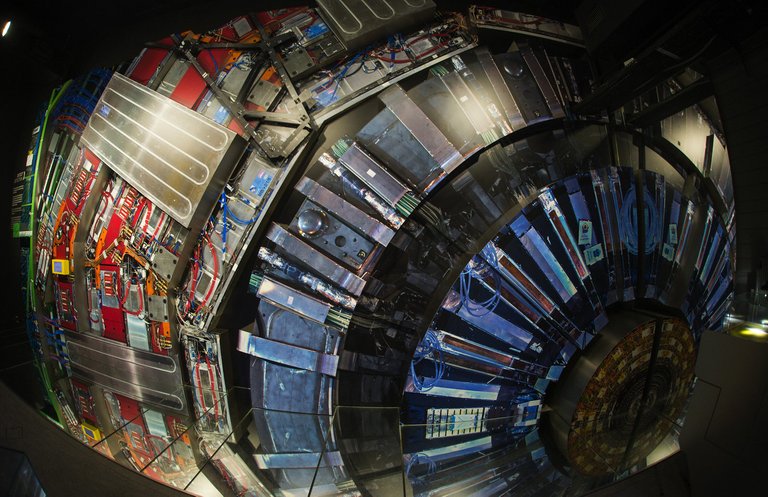
[Credits: Eric Bridiers (CC BY-ND 2.0)]
Act 3 - supersymmetry as a miraculous cure
As said above, in supersymmetric theories the particles of the Standard Model are all associated with a bunch of partners. On top of making the entire theoretical framework very elegant, the effects of the partners are numerous. I focus below on what I consider as three main motivations for supersymmetry as an extension to the Standard Model.
First of all, if the lightest of the partners is electrically neutral and only weakly-interacting (which is very easy to achieve), we have a perfect candidate for dark matter.
Dark matter is the most abundant form of matter in the universe, contributing to 85% of all matter around us. Whereas there is significant cosmological evidence for it (as explained in this blog), a direct observation of dark matter is still missing. As a consequence, dark matter is an extremely interesting substance today.
While the Standard Model is unable to provide any particle playing the role of dark matter, once it is supersymmetrised the situation becomes different. The lightest of all supersymmetric partners is often stable (this is the case in general, although exceptions exist), and can thus be a perfect dark matter particle if it has no electric charge. All calculations made, it turns out this candidate for dark matter has properties generally in agreement with cosmology and collider constraints on dark matter models.
On a much brighter topic, supersymmetry provides interesting insight on the unification of the three fundamental interactions. To understand how this is achieved, we must recall that the coupling strengths of the three known fundamental forces depend on the energy. This dependence comes from quantum effects. This implies for example that the strong interaction is strong only at low energies, and that its strength decreases with an increase of the energy. As another example, we can say that electromagnetism behaves in an opposite manner.
In the Standard Model, there is an energy at which the three couplings are almost equal. Almost… With supersymmetry, this ‘almost equal’ becomes ‘equal’. In other words, the supersymmetrisation of the Standard Model paves the way to a Grand Unification of all fundamental forces.
Finally, supersymmetry naturally provides a cure to the hierarchy problem inherent to the Standard Model. More information about this issue is provided in the last part of this earlier blog. In a nutshell, the hierarchy problem comes from the size of the Higgs field, that has to be close to that of the masses of the Z and W bosons. However, in the Standard Model the Higgs field is sent to 100,000,000,000,000,000 times this values by quantum effects, except if all the parameters of the theory are tuned to their 30th digit (something very inelegant).
When the theory is made supersymmetric, the partners play a (quantum) role and cure the issue, naturally protecting the size of the Higgs field with respect to any quantum effect. This is probably one of the best motivations for supersymmetry, in my opinion, together with the fact that it naturally arises when we try to build the most general quantum field theory of interacting particles.
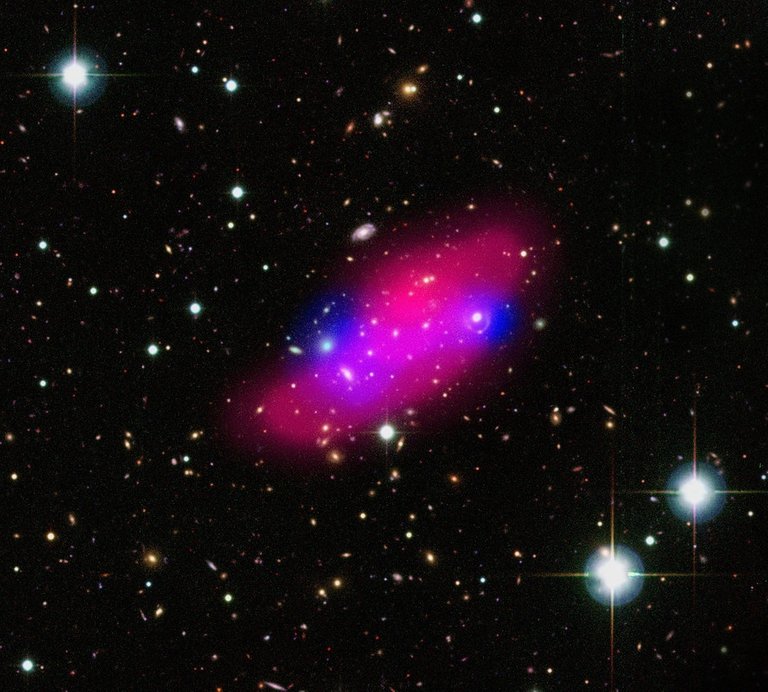
[Credits: ESA (CC BY-SA IGO 3.0)]
Act 4 - Hunting for supersymmetry at colliders
Supersymmetry being very motivated, it has been actively searched for at past and present colliders. In particular, the search program at CERN’s Large Hadron Collider (LHC) has a huge supersymmetry part, as testified on this webpage of the CMS collaboration and this webpage of the ATLAS collaboration. These two webpages collect all LHC analyses looking for supersymmetry. As can be seen, hundreds of analyses have been put in place in order to track down and observe any potential hint for supersymmetry in data. Unfortunately there is no signal emerging so far.
Almost all those searches investigate signals originating from the production of a pair of supersymmetric particles. The two new particles then decay either directly or via intermediate particles into dark matter (the lightest supersymmetric partner), together with either a small or a large number of Standard Model particles.
This gives a wealth of potential signatures, depending on what the Standard Model particles issued from the decay processes are. Every single option has been tried experimentally: quarks, leptons, Higgs bosons, etc. Moreover, as said above all of those Standard Model particles are produced with two dark matter particles.
As explained here, any dark matter produced in a detector would leave it stealthily, undetected. This means that any supersymmetric signal at colliders would feature a significant amount of missing energy. This comes from energy and momentum conservation, a core physics principle known to be satisfied in every single process. In simple terms, energy conservation implies that all the energy present in the initial state of a collision has to be found in its final state. Therefore, if dark matter is produced, some energy should be missing (as dark matter cannot be detected and thus takes energy away).
As a consequence, any supersymmetric signal contains Standard Model particles produced in association with a large amount of missing energy. However, as said before, there is no sign of this in data. In addition, this is the case for any combination of Standard Model particles.
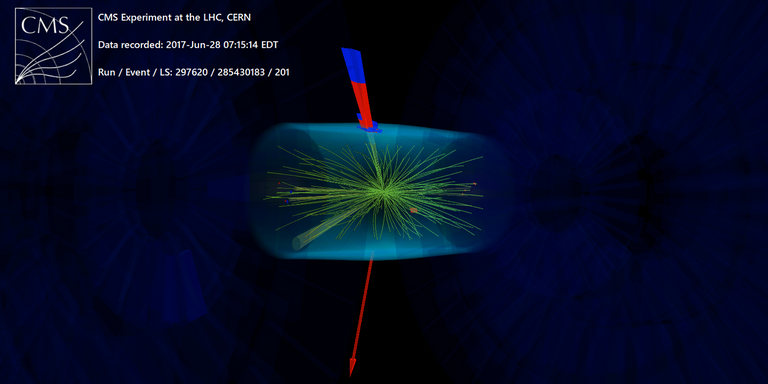
[Credits: CERN]
Curtain calls - supersymmetry in a nutshell
Today, I posted as a prelude for my next blog an introduction to supersymmetry. Supersymmetry is one of the most popular classes of theories extending the Standard Model of particle physics. It naturally arises in quantum field theory when we try to build a general theory of particle physics satisfying some symmetry principles. As a key prediction, it leads to a theory particle content in which each fermion has a bosonic partner, and each boson has a fermionic partner.
Inserting the Standard Model in this context leads to doubling the particle content of the theory. The quarks and leptons of the Standard Model are associated with bosonic partners called squarks and sleptons, and the forcer carriers and the Higgs boson are paired with gauginos and higgsinos.
Complicating the particle content has very important advantages. As key features, the theory includes not only a particle that could play the role of dark matter, but several conceptual limitations of the Standard Model are cured as a bonus. Those includes the famous hierarchy problem of the Standard Model, as well as the unification of the fundamental interactions at high energies.
As a consequence, supersymmetry is actively searched for in data. In particular, we expect a signal at CERN’s Large Hadron Collider made of missing energy (carried away by the dark matter candidate in the model) and a number of Standard Model particles. In other words, we have a signal containing a good amount of particles from the Standard Model, and a significant amount of missing energy taken away by the dark matter particles. The latter are produced either directly, or they originate from the decay of other heavier supersymmetric particles.
Unfortunately, for now there is no sign for supersymmetry in data. However, our hunt is far from being over and the future and its enormous amount of expected data looks at least interesting.
I hope you enjoyed reading this blog. Please do not hesitate to ask questions, make comments and raise your opinion in the comment section of this blog. Have all a wonderful week, and see you… tomorrow for some citizen science activities on Hive!
I've been waiting on your supersymmetry blogs :)
Great introduction on the subject!
I have one question about the dark matter with the supersymmetry thing so far.
How can supersymmetry explain the 85% abundance of dark matter compared to all other matter? Also, wouldn't the invocation of all the supersymmetric partners alter the 85% dark matter / 5% matter, since they are massive?
If it's complicated to answer or I'm not understanding it well, I can wait for your next blogs about it.
Thanks for the detailed and informative read!
I am actually not 100% sure to follow the question. I will try to answer it by dissecting it. Feel free to interrupt my answer as soon as there is something that is unclear.
First of all, I am only focusing on the matter part of the energy budget of the universe. We thus ignore dark energy.
There, we have more or less 85% of dark matter and 15% of standard matter. The 85% of dark matter are then made of the only dark matter particle included in all supersymmetric partners. All the other supersymmetric partners being unstable particles (they decay into dark matter), they are not there anymore in our universe today. Whereas they were present in the early universe, they have indeed all decayed since then.
Please let me know whether this clarifies. Cheers!
Yes, that indeed clarifies it very well. The confusion when I was reading was at this point:
Somehow I thought IT alone decays into dark matter.But this cleared it up pretty well:
👍
Ah OK I see the issue and where the confusion came from.
Dark matter is in fact one particle from the full set of supersymmetric partners. It has to be the lightest one, or in other words the only one that can be stable. Any supersymmetric particle can always decay in a lighter supersymmetric particle, which is thus impossible for the lightest state.
Yup, all clear now. Thanks :)
Just checked out your publication list on Arxiv. That's quite an impressive amount of work done!
Thank you :)
Ideally, I would like to cover them all on Hive with associated blogs. However, there is still a long way to go before getting there (the main limitation being time).
You are welcome
?
I'm just welcoming/congratulatinghim for just making the discovery. It is a kind of sarcastic joke.
Gasp
@gentleshaid is @lemouth! lol jk
I was a bit confused by the response as well.
Hehe... Don't let HW see it :). The response is a sarcastic way of saying 'why did it take you so long to uncover lemouths profile? "
I won't tell if you won't tell. lol
Ahaha now I understand.
I am not surprised @michelmake does not know much about who I am (even if I don't hide it). In fact, I was very pleased to see that he checked. This demonstrates that details matter.
We should not forget that we are around for many years and know each other as well as we could for two people who never met in real life. This is not his case :-)
And now I lost it 😅
I am a multi-head monster. I thought you knew ;)
That was not the stereotype I was given of French people. :v
That's fine, I am not French ;)
Thank you for your witness vote!
Have a !BEER on me!
To Opt-Out of my witness beer program just comment !STOP below
View or trade
BEER.BEERHey @enforcer48, here is a little bit of from @isnochys for you. Enjoy it!Learn how to earn FREE BEER each day by staking your
BEER.It is quite an honor to have that paper published, quite an achievement. We are lucky that you have the patience to explain these theories to us. My vocabulary in theoretical physics grows. I now know about fermions, that only exist apparently in half integers.Hello @lemouth,
As always, the blog took me into realm of theoretical exploration that I would never, ever know. Thanks for expanding my knowledge of the universe.
Thanks for passing by! Just to make it clear, the article has been submitted but it is by far not published yet. There is an entire peer-review process that has been initiated, and it can take weeks, and even months, until the articles gets finally accepted for publication. However, in a vision of open access, the preprint is available already from now, freely to anyone who may be interested in it (that's a specificity of the field of high-energy physics).
I am very happy to have been able to share some insight on supersymmetry with this blog. Glad to read you appreciated it.
~~~ embed:1503838287391342595 twitter metadata:QV9HX01vb3JlfHxodHRwczovL3R3aXR0ZXIuY29tL0FfR19Nb29yZS9zdGF0dXMvMTUwMzgzODI4NzM5MTM0MjU5NXw= ~~~
The rewards earned on this comment will go directly to the person sharing the post on Twitter as long as they are registered with @poshtoken. Sign up at https://hiveposh.com.
Yay! 🤗
Your content has been boosted with Ecency Points
Use Ecency daily to boost your growth on platform!
Support Ecency
Vote for new Proposal
Delegate HP and earn more, by @lemouth.
Thanks for your contribution to the STEMsocial community. Feel free to join us on discord to get to know the rest of us!
Please consider delegating to the @stemsocial account (85% of the curation rewards are returned).
You may also include @stemsocial as a beneficiary of the rewards of this post to get a stronger support.